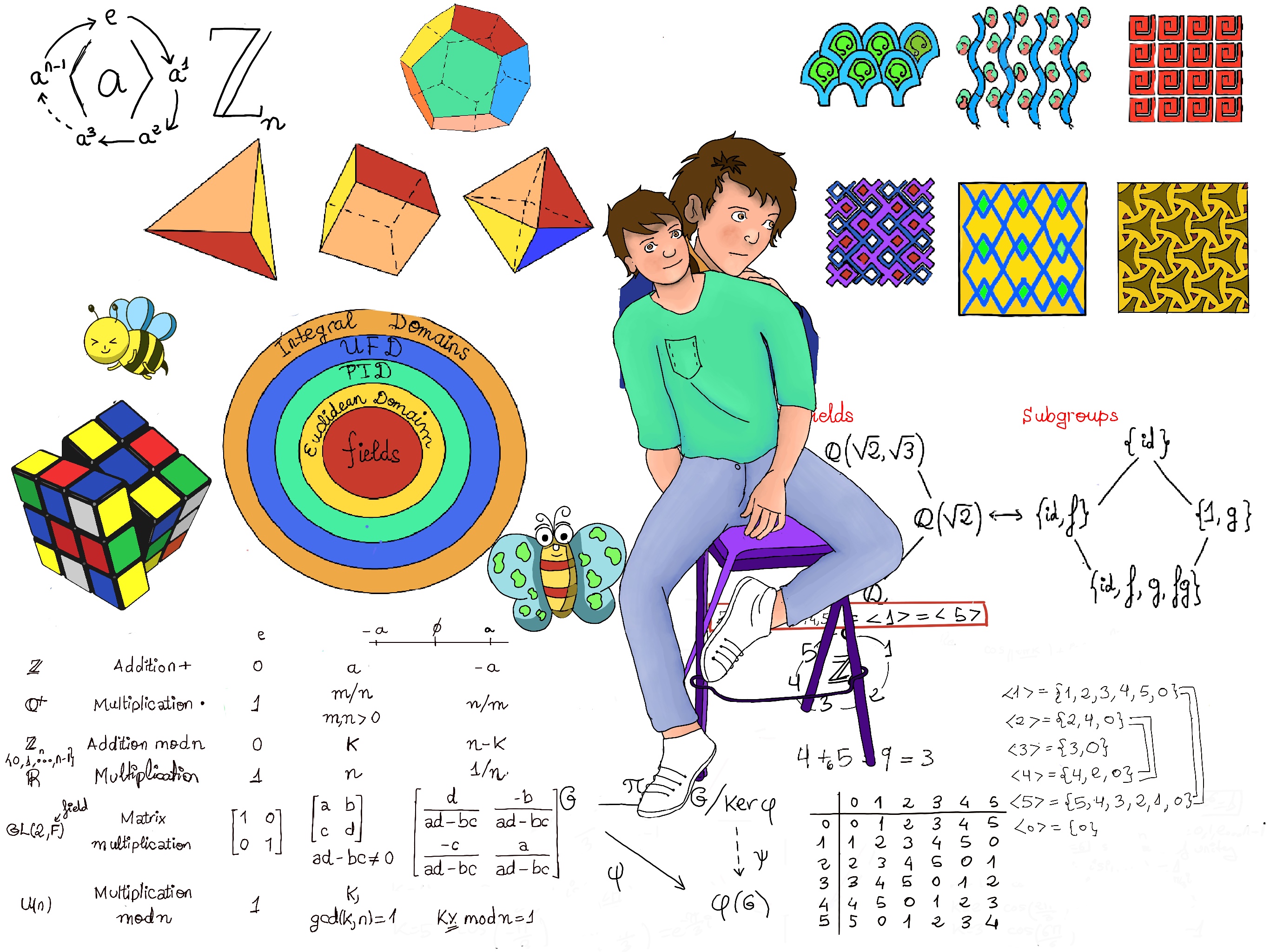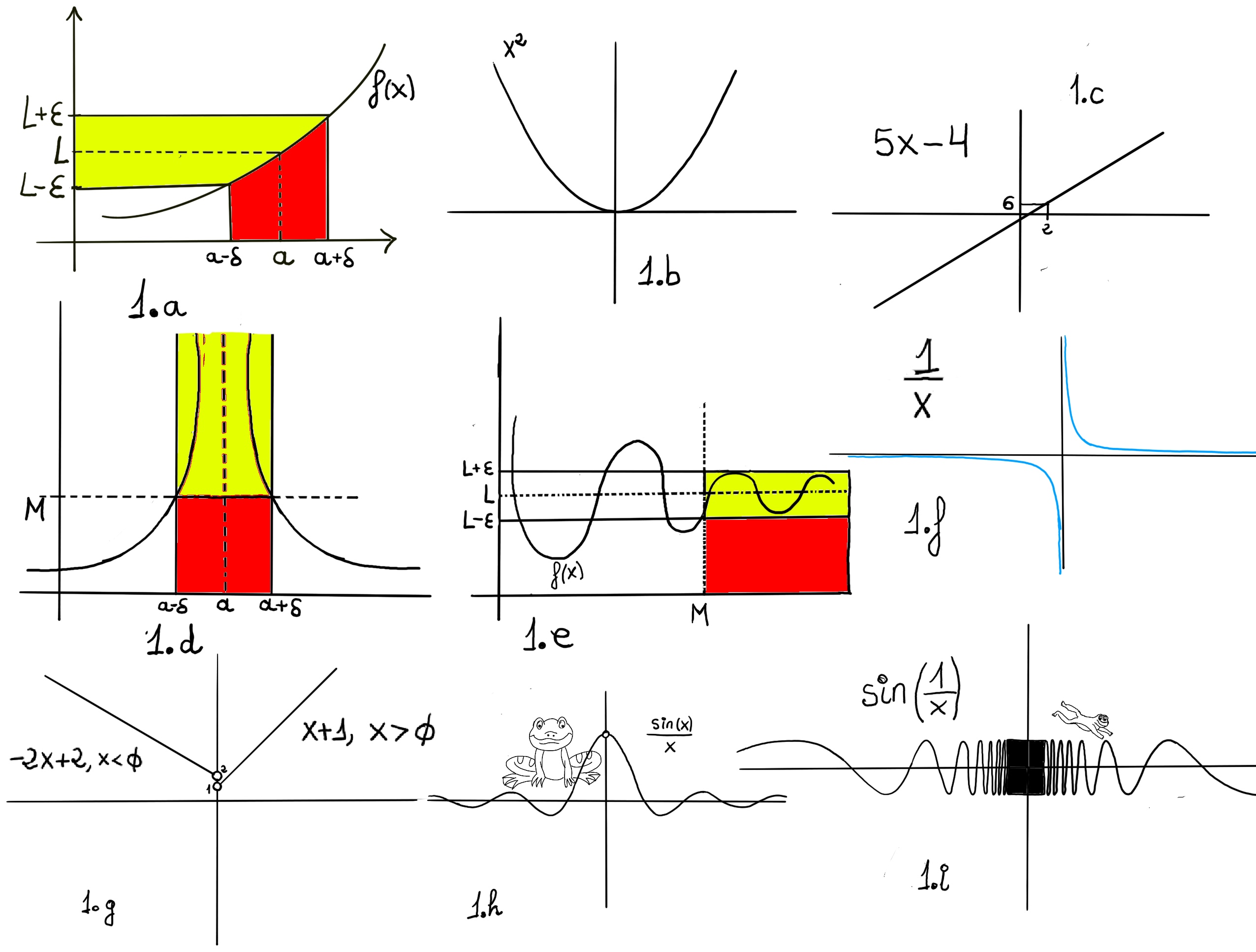
|
 |
 |

|
 |
 |
You’ve gotta dance like there’s nobody watching, love like you’ll never be hurt,sing like there’s nobody listening, and live like it’s heaven on earth, William W. Purkey.
A function f(x) is continuous at a point x = a if and only if the following three conditions are satisfied:
Geometrically, you can think of a function that is continuous as a function whose graph has no break in it. Intuitively, f is continuous at a if f(x) gets closer and closer to f(a) as x gets closer and closer to a. Formally, let f(x) be a function defined on an interval that contains x = a, then we say that f(x) is continuos at x = a, if
$\forall \epsilon>0, \exists \delta>0: |f(x)-f(a)|<\epsilon, whenever~ |x-a| < \delta.$

A function is discontinuous if you cannot draw its graph without lifting your pen. The function’s graph does not form a continuos line, but instead has gaps such as jumps, holes, or breaks. More formally, a function is discontinuous at a point a if it fails to be continuous at a, that is, when it breaks any of the continuity criteria, such as, f(a) is not defined, $\lim_{x \to a} f(x)$ does not exist, or $\lim_{x \to a} f(x) ≠ f(a).$
There are different types of discontinuities:
$f(x) = \begin{cases} x + 1, &x > 0\\\\ -2x + 2, &x < 0 \end{cases}$ -1.g.-
$\lim_{x \to 0^{+}} f(x) = 1 ≠ 2 = \lim_{x \to 0^{-}} f(x).$
$f(x) = \begin{cases} -x^{2} + 4, &x≤3\\\\ 4x - 8, &x > 3 \end{cases}$
$\lim_{x \to 3^{+}} f(x) = 4 ≠ -5 = \lim_{x \to 3^{-}} f(x).$
 $\lim_{x \to 0^{+}} \frac{sin(x)}{x} = 0$, but f(0) is not defined.
$\lim_{x \to 0^{+}} \frac{sin(x)}{x} = 0$, but f(0) is not defined.f(x) = $\frac{x^{2}-4}{x-2}$. $\lim_{x \to 2}\frac{x^{2}-4}{x-2} = \lim_{x \to 2}\frac{(x-2)(x+2)}{x-2} = \lim_{x \to 2} (x+2) = 4,$ but f(2) is undefined.
$f(x) = \begin{cases} 2x + 1, &x<1\\\ 2, &x=1\\\ -x + 4, &x > 1 \end{cases}$
$\lim_{x \to 1^{+}} f(x) = 3 = \lim_{x \to 1^{-}} f(x), but \lim_{x \to 1} f(x) = 3 ≠ 2 = f(1)$
y = 1⁄x -1.f.- where $\lim_{x \to 0^{+}} \frac{1}{x} = \infty$ and $\lim_{x \to 0^{-}} \frac{1}{x} = -\infty$
y = (x+2)⁄(x+1) where $\lim_{x \to -1^{+}} \frac{x+2}{x+1} = \infty$ and $\lim_{x \to -1^{-}} \frac{x+2}{x+1} = -\infty$
Theorem. If a function f is differentiable at x = a, then f is continuous at x = a.
Proof. We need to check if $\lim_{x \to a} f(x) = f(a) ↔ \lim_{x \to a} f(x) - f(a) = 0$
$\lim_{x \to a} f(x) - f(a) = \lim_{x \to a} \frac {f(x) - f(a)}{x - a}(x-a) =$[By assumption, f is differentiable at x = a] f’(a)·0 = 0.